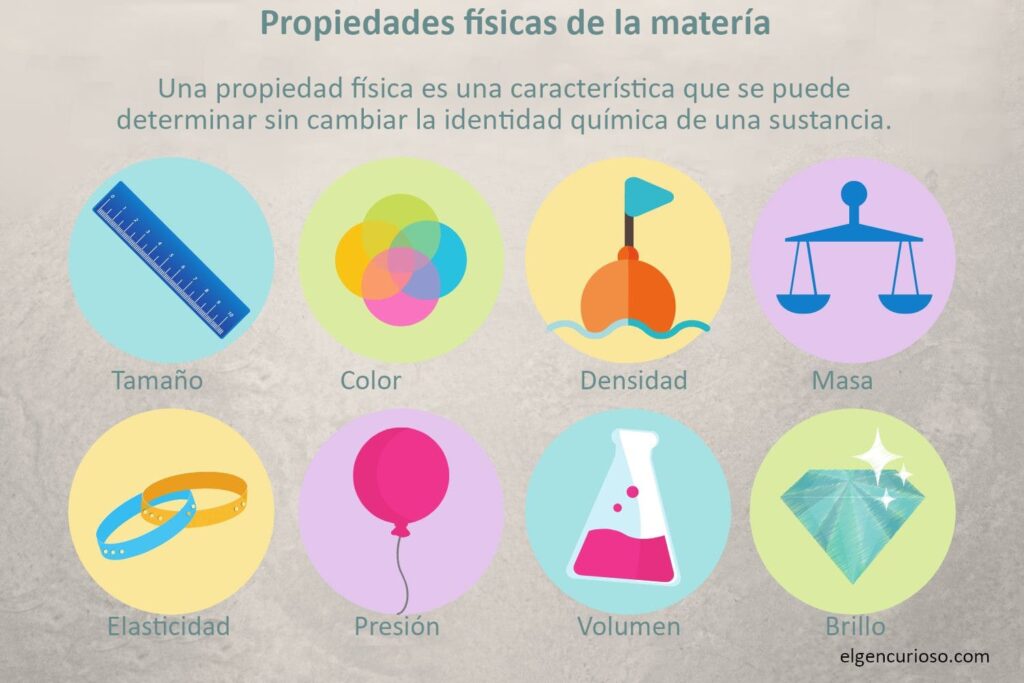
A physical property of matter is a characteristic that can be observed and measured without changing the chemical identity of a substance. Any property that can only be observed after a chemical change occurs is a chemical property, but a physical property can be seen when no change occurs or when a physical change occurs. Examples of physical changes include phase changes between states or matter and changing the shape of matter by bending or cutting it. Physical properties include features that we can observe using our senses, so they are important for describing matter.
Examples of physical properties
Physical properties include mechanical properties and any characteristic that you can see, smell, taste or touch. Some examples of physical properties are shown below:
- Area: size of a two-dimensional surface
- Boiling pointtemperature at which a liquid turns into a gas.
- Fragilitytendency to break under stress.
- Colour: wavelengths of light reflected by matter.
- Density: amount of matter per unit volume
- Ductility: measure of the ease with which a substance stretches to form a wire.
- Malleability: a measure of the ease with which a substance can be crushed or compressed into sheets.
- Freezing point: temperature at which a substance changes from a liquid to a solid.
- Length: longest dimension of an object
- Brightness: a measure of the interaction between light and the surface of an object.
- Mass: amount of matter in an object
- Solubility: quantity of matter that dissolves in a solvent.
- Temperature: measure of the thermal energy of a substance.
- Viscosity: resistance to tensile deformation; resistance to flowing
- Volume: three-dimensional space occupied by a substance
- Weight: effect of gravity on a mass
Intensive and extensive physical properties
The two broad categories of physical properties are intensive and extensive properties.
A intensive property does not depend on the size or mass of a sample. For example, density is an intensive property because it is the same no matter where you sample a substance. Other intensive properties include boiling point, freezing point, viscosity, gloss, and state of matter.
In contrast, a extensive property depends on the amount of matter in a sample. For example, mass depends on the size of the sample. Other examples of extensive properties include length, volume, area and thermodynamic properties such as enthalpy and entropy.
Isotropic and anisotropic physical properties
Another was to classify a physical property as isotropic or anisotropic. One anisotropic property does not depend on the orientation of the sample. For example, mass and volume are isotropic because the direction of the matter being measured does not matter. An isotropic property depends on the orientation of the sample. For example, a crystal may appear one colour when viewed from a certain angle and a different colour when viewed from another angle.
Isotropic and anisotropic physical properties depend on the sample. Thus, colour or opacity may be an isotropic property for one substance, but not for another. These terms are generally reserved for optical and mechanical properties in materials science.